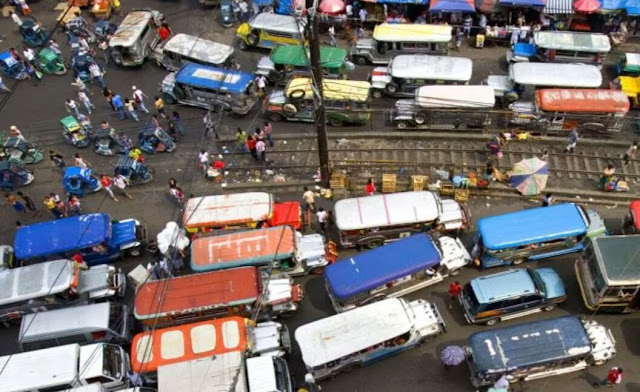Jeepneys are a persistent roadblock to Philippine progress!
The Jeepney is itself is a symbol of failure to solve a problem in its history. First, it was used as a stopgap measure because of the destruction of the tranvia during World War 2. Leftover Willys MBs (the original Jeep) were taken by Filipinos (wonder if that reflects the Filipino desire to live on pillages) to be converted into temporary transport until a replacement for the tranvia was made. But that replacement never came, and jeepneys stayed. What made jeepneys more dangerous was the boundary system, that business model that makes drivers race dangerously and cut off competition in trying to “make agaw” passengers. Well, that’s another symbol from this, the “agawan” mentality of Filipinos.
Filipino may continue to celebrate jeepneys as a symbol of Filipino “ingenuity,” but it could also be seen as a symbol of both keeping stopgaps instead of thinking of permanent solutions and dependence on the Americans. The latter is clear when you realize the jeepney retains the 1930s features of the Willys MB.
From what I hear, jeepneys have no hand brakes, so that makes them dangerous when parked on slopes. I remember once at Ever Commonwealth, a jeepney I had boarded with a friend slipped its chock (calso) and was rolling down the ramp without a driver. Luckily someone jumped in to stop it, and no one was hurt. But that demonstrates the risk such jeepneys pose.
If jeepneys are gone, solutions like carpooling, Uber and Grab, trains, electric cabs (like those in Cubao and Centris), motorcycles and bicycles should fill in the gap. It doesn’t take too many brain cells to think of something.
But the problem that compounds transport is the overcrowding of the metropolis. We wouldn’t need so much transport if we didn’t have too many people in the city.
Perhaps what keeps jeepneys and boundary system transport is that politicians may be owners of transport companies or have stakes in them. Same with mass media.
------------------------
This is a GRP Featured Comment. Join the discussion!
This is a GRP Featured Comment. Join the discussion!





Yes, the jeepneys may be fewer in number than private vehicles, but the fact that they are on the road almost 24/7 means that they are major traffic generators.
ReplyDeleteadd to that woes is the manner drivers drive their jeep... the're so rude, ill mannered and completely ignorant of traffic laws... wonder how they were able to get their drivers license...
ReplyDeleteSome years back, a friend who's into politics once said, "Anyone who can take the jeepneys out of the streets, is the man most qualified to run the country." Somehow I agree with him not because I hate them, even if I have all the valid reasons to, but because I need to know and understand what would become of them after the phaseout.
ReplyDeleteTrue, they have become an icon of the streets of Manila after the WWII. But let's face it, just like many other things in this country that we have been proud of and benefitted from, the issue on jeepneys has been politically used and abused by many who are in politics. Most of its owners or operators are either barangay captains (town chieftains) or members of his/her council.
True, it's also a popular and cheap mode of public transport, but let's be honest to ourselves, what is it really giving back to our economy entirely?
Let us not prolong the agony. We all know the jeepneys and their incorrigible drivers are only a few causes of traffic woes in this country. The only way to control them is thru regulation thru legislation, and impose the rule of law on their erring drivers or operators. Big cities can no longer afford to tolerate their presence, albeit their arrogance. Being poor is no longer an issue to get away with what the law dictates. DURA LEX, SED LEX.